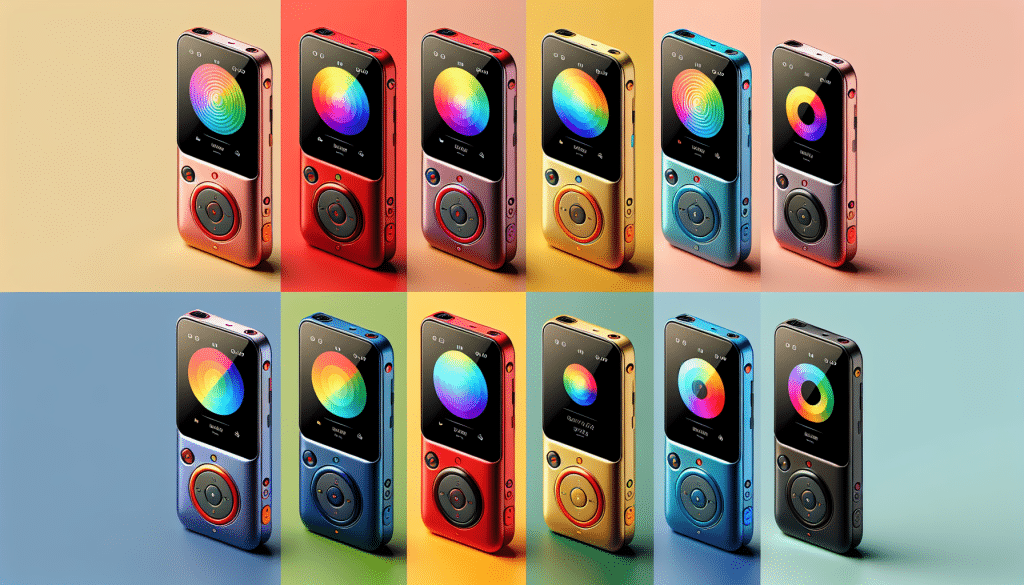If you’re a brand owner or a marketer, you’ve probably noticed a significant shift in consumer behavior and preferences in recent years. More and more, consumers are showing a strong preference for brands that prioritize sustainability. But why is this? And how can brands effectively respond to this rising demand? Let’s delve into these questions by understanding the rising consumer demand for sustainable brands.
Why is Consumer Demand for Sustainable Brands on the Rise?
If you’re wondering why consumers are increasingly attracted to sustainable brands, it all boils down to one keyword: consciousness. Today’s consumers are more conscious and informed than ever. They care not only about the quality of the products they purchase but also about how these products are made and the impact they have on the environment.
According to a recent study by NYU Stern’s Center for Sustainable Business, products marketed as sustainable grew 5.6 times faster than those that were not. In fact, sustainable goods accounted for 54.7% of the total growth in consumer packaged goods (CPGs) from 2015 to 2019.
This trend is not limited to a particular age group or consumer segment. From millennials to boomers, from luxury goods enthusiasts to budget shoppers, the desire for sustainable products is widespread.
Factors Fuelling the Demand
Several factors are driving the rising consumer demand for sustainable brands. Here are just a few:
- Environmental Concerns: With the escalating climate crisis, consumers are increasingly concerned about the environmental footprint of the products they consume.
- Social Consciousness: Consumers are becoming aware of the social implications of their purchases, seeking brands that treat their employees fairly and source their materials ethically.
- Health and Wellness: Many consumers associate sustainability with health and wellness, preferring organic or natural products over synthetic ones.
How can Brands Respond?
Given the rising consumer demand for sustainable brands, how can brands effectively cater to this demand? Here’s a hint: it’s not just about “greenwashing” or making vague claims about sustainability. Consumers are savvy and can see through such tactics.
Instead, brands need to genuinely commit to sustainable practices and transparently communicate these practices to their customers. This could involve making changes to the sourcing, manufacturing, and packaging processes, among others. It could also involve supporting environmental or social causes that align with the brand’s values.
The key is to make sustainability an integral part of the brand’s identity and not just a marketing gimmick. This requires a top-down commitment to sustainability, involving every aspect of the business from the boardroom to the factory floor.
Indeed, understanding and responding to the rising consumer demand for sustainable brands is no longer a choice for brands. It’s a necessity in today’s increasingly conscious and informed marketplace.
The Integral Role of Sustainability in Modern Advertising Strategies
Today, sustainability isn’t just a trend, it’s a powerful movement that’s transforming the way businesses operate and market their products. But how does it weave itself into modern advertising strategies? Let’s dive in and explore!
Why is Sustainability in Advertising Important?
First things first, let’s understand why sustainability matters in advertising. According to a Nielsen report, 66% of global consumers are willing to pay more for sustainable goods. This demonstrates a clear consumer demand for brands that value the environment, making it integral to include sustainability in advertising strategies.
Incorporating Sustainability into Your Advertising Strategy
So, how can brands incorporate sustainability into their advertising strategy? Here are a few tips:
- Transparency: Consumers value honesty. Be transparent about your sustainable practices, so they understand the real impact of their purchases.
- Authenticity: Greenwashing — a practice where companies falsely claim to be environmentally friendly — can harm your reputation. It’s vital to be authentic in your sustainability claims.
- Educational Content: Use your platform to educate consumers about sustainability and how your products help. This not only promotes your brand but also empowers consumers to make informed decisions.
Success Stories: Sustainability in Advertising Done Right
Several brands have successfully incorporated sustainability into their advertising strategy. Here are a couple of examples:
- Patagonia: This outdoor clothing brand has always prioritized sustainability. Their “Don’t Buy This Jacket” campaign encouraged consumers to think about the environmental cost of consumerism, establishing Patagonia as a sustainability leader.
- Unilever: This multinational consumer goods company uses its platform to address global sustainability issues. Their “Small Actions. Big Difference” campaign promotes sustainable living, demonstrating Unilever’s commitment to the environment.
These brands illustrate that integrating sustainability into your advertising strategy is not just good for the environment, but also for your brand’s reputation and bottom line.
Case Studies: Successful Incorporation of Sustainability in Ad Messages
Let’s take a moment to delve into a few examples of companies that have successfully incorporated sustainability into their advertising messages. It’s a fantastic way to see how sustainability can be both a selling point and a core brand value.
1. Patagonia
Patagonia, one of the pioneers of the sustainable brand movement, has always made it clear that they prioritize the planet over profits. A prime example is their bold “Don’t Buy This Jacket” advertisement, a message advocating for reduced consumption. Patagonia’s commitment to sustainability shines through in their ads, and they’ve even gone as far as to offer repairs and recycling for their products, demonstrating their dedication to a circular economy.
2. Ikea
Home furnishing giant, Ikea, is another compelling case study. They’ve committed to becoming ‘climate positive’ by 2030, and this goal is reflected in their advertising. For instance, Ikea’s “Wonderful Everyday” campaign emphasizes their focus on sustainable living, showcasing how their products can help consumers reduce energy and water consumption.
3. Allbirds
Footwear company, Allbirds, is a relative newcomer that’s made sustainability central to its brand. Allbirds shoes are made from natural and recycled materials, and this is featured prominently in their advertising. They’ve even published the carbon footprint of each of their products, raising the bar for transparency in sustainable advertising.
These examples are just a taste of the many companies embracing sustainability in their advertising strategies. There’s a clear trend towards more responsible, sustainable business practices in a variety of sectors. This shift is not only beneficial for our planet, but it’s also increasingly becoming a driving factor for consumers’ purchasing decisions.
How can you incorporate sustainability in your brand’s ad messages?
Based on these case studies, there are a few key takeaways. First, you’ll want to make your commitment to sustainability clear. This can be done by setting concrete sustainability goals and communicating them effectively through your ads.
Second, show, don’t just tell. Demonstrating the impact of your sustainability efforts, like Allbirds does with their carbon footprint metrics, can give your claims more credibility.
Finally, don’t be afraid to challenge the status quo. Patagonia’s unconventional approach to advertising definitely turned heads, but it also significantly boosted their brand’s reputation for sustainability.
With these strategies in mind, you’re well-equipped to start incorporating sustainability into your own brand’s ad messages. Remember, it’s about more than just selling products or services—it’s about contributing to a sustainable future.
Shaping the Future: Adapting Brand Messages for Sustainable Practices
The future of advertising is green, but updating your brand’s message to reflect sustainable practices isn’t just about jumping on a trendy bandwagon. It’s about showing your customers that you are taking active steps to reduce your environmental impact and contribute to the sustainability of our planet. Let’s explore how you can reshape your brand messaging to reflect these critical values.
Understand your Audience
Before making any significant changes, it’s crucial to understand what sustainability means to your audience. This will help dictate the tone and content of your messaging. For some audiences, sustainability might mean reducing waste, while for others, it could be more about ethical sourcing or energy efficiency. Use surveys, polls, or focus groups to unearth these valuable insights. Then, use this data to tailor your messaging.
Align your Core Brand Values with Sustainable Practices
Any shift in brand messaging should align with your core brand values. If your company has always valued innovation, for example, you might emphasize the innovative steps your company is taking towards sustainability. This approach ensures that your sustainability messaging is consistent with your overall brand identity, making it more believable and impactful.
Highlight your Sustainable Practices
Transparency is key when it comes to sustainable messaging. If you’re using eco-friendly packaging, for instance, don’t be shy about it! Share the process behind this decision, the impact it has, and why it matters. Similarly, if you’re investing in renewable energy, explain why this choice aligns with your brand and how it benefits the environment.
Make it a Story
People connect with stories, so turn your sustainability efforts into compelling narratives. Explain the challenges you faced and the solutions you found. This makes the message more engaging and gives your audience a behind-the-scenes look at your commitment to sustainability.
Use Visuals
Visuals are a powerful tool in conveying your sustainability message. Use photographs, infographics, and videos to show, not just tell, your sustainable practices. If you’ve installed solar panels at your office, for example, share a time-lapse video of the installation process. If you’re using recycled materials in your products, share photos or infographics that highlight this.
Ultimately, adapting your brand messaging to reflect sustainable practices can help foster a deeper connection with your audience, differentiate your brand, and contribute to a more sustainable future. It’s not just a trend – it’s a necessary shift that requires thoughtfulness, transparency, and genuine commitment.













2 thoughts on “Sustainability in Ad Messages: Growing Importance”
f724cx
Thank you for your sharing. I am worried that I lack creative ideas. It is your article that makes me full of hope. Thank you. But, I have a question, can you help me?